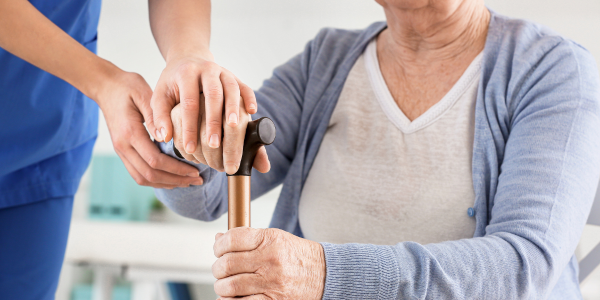Parkinson’s disease (PD) is currently the second-most common neurodegenerative disorder in the U.S. Experts estimate that one million people live with the disease, and nearly 60,000 new cases are diagnosed each year.
One particularly challenging aspect of Parkinson’s and similar conditions is the freezing of gait that individuals often experience when walking. Freezing of gait can be frustrating and also cause falls.
Fortunately, ongoing research suggests that visual and auditory cues can help make walking easier. Learn more about the findings and latest assistive devices in this blog curated by The Bristal Assisted Living.
How Does Parkinson’s Disease Affect Mobility?
People living with Parkinson’s disease frequently feel like they can’t move, almost as if their feet are stuck to the floor. As the disease progresses, individuals must try to maintain mobility as their legs become stiffer and their stride becomes shorter. As a result, they often find themselves unable to control their muscles.
Nearly 80 percent of individuals with advanced Parkinson’s experience freezing of gait, while over 25 percent with mild Parkinson’s symptoms do. Freezing of gait can make it difficult to remain active, sometimes reducing the quality of life and independence.
Related: The Benefits of Physical Therapy for Seniors >>
Parkinson’s causes dopamine, a key chemical in the brain, to become depleted. The loss of dopamine can lead to damage in the basal ganglia area of the brain.
The basal ganglia are responsible for automatic movements and the tasks we do without thinking throughout the day. These include activities like standing up, walking, or getting out of bed. The damage to this area of the brain results in stiff muscles, involuntary movements, and problems with balance.
How Devices Using Visual and Auditory Cues Can Improve Mobility for Individuals With Parkinson’s
Research suggests that visual and auditory cues can help improve mobility for people living with Parkinson’s disease. For the past few decades, Dr. Jay Van Gerpen, neurologist and movement disorders specialist at the Mayo Clinic in Florida, has studied how a laser-generated beam of light can help make walking easier.
When people with Parkinson’s followed visual cues, such as white lines marked on a dark floor or a laser beam, they could lengthen their stride and walk more normally.
The lines seem to help individuals overcome the deficits created by the damage that the disease causes on the basal ganglia of the brain and the resulting loss of muscle control. It is believed this occurs because movements linked to visual cues are processed through the brain differently than those tasks we do automatically.
Dr. Van Gerpen began to explore the idea of using lasers to mimic the lines used in the study. His device, called the Mobilaser, attaches to a walker or a cane and sends a beam of light for people to follow.
The visual cue, the red laser line, essentially re-routes the signals in the brain. So, instead of trying to use the damaged primary motor cortex of the brain to signal the body to walk, the laser’s red line provides the person with a visual cue to follow. The task of following the red line sends the brain a different signal and utilizes an area of the brain that is still working well.
Related: Mobility and Parkinson’s Disease >>
Sidney Collin, researcher, engineer, and CEO of De Oro Devices, had similar findings when she invented a visual and auditory cueing device, NexStride, for a local veteran with Parkinson’s disease whom she met while studying biomedical engineering at Cal Poly.
The small device fits in the palm of your hand and projects a green laser line onto the floor as a visual cue and a metronome for the auditory cue. Individuals with Parkinson’s or similar brain conditions can visualize stepping over the line to the beat of the metronome. This action changes the part of the brain that’s been activated, making it easier for someone to walk.
If you or a loved one is living with Parkinson’s or a similar condition, it’s important to talk to your medical professional about the best treatment options for you. Each individual can have unique symptoms and can respond differently to cueing devices.
Subscribe to Receive More Wellness and Lifestyle Resources
Sign up for our monthly newsletter to stay informed on the latest articles, tips, and information geared toward seniors.
Sign Up for Our Monthly Newsletter >>
This blog was originally published on February 11, 2014 and updated in 2023.


